In 2019, the historic Inwood Iron Bridge in Union Township, Lebanon County was disassembled for relocation.
Two years later, in 2021, staff from the PA SHPO and PennDOT’s Environmental Policy and Development Division visited the rehabilitated Inwood Iron Bridge at its new location, a county pocket park on Old State Road about 300 feet south of the original location. The park, created for the purposes of bridge preservation and education, attracts visitors from the nearby Swatara Creek Park and the Appalachian Trail, enabling a larger audience to view and appreciate Pennsylvania’s namesake, the Pennsylvania thru truss bridge.
The history behind the bridge and its relocation is outlined in this earlier post. To recap, the Inwood Iron Bridge is a 160-foot-long, pin-connected, Pennsylvania (Petit) thru truss bridge. Built by Nelson & Buchanan of Chambersburg, agents of the Pittsburgh Bridge Company, in 1899, the bridge originally carried Iron Bridge Road over Swatara Creek.
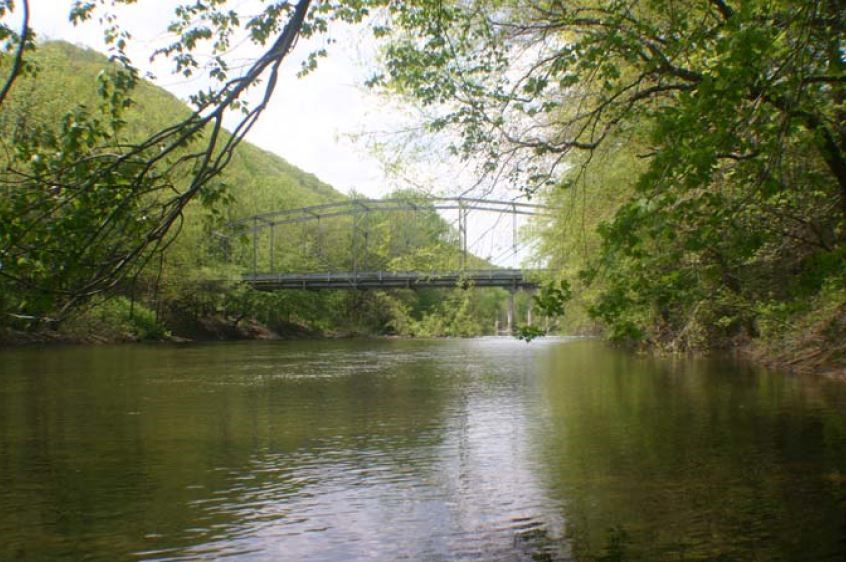
The Inwood Iron Bridge is eligible for listing in the National Register of Historic Places. This is a rare example of the Pennsylvania (Petit) truss, one of only 13 remaining National Register eligible examples of the type in the state. It features Z-plate floorbeam hangers, a distinctive design detail of the Pittsburgh Bridge Company that was found on only five bridges in the 2017 Metal Truss Bridge Reevaluation.
In 2005, the bridge was closed to traffic. During the Section 106 process it was determined that the historic bridge could not be rehabilitated to meet modern traffic needs without significant alterations to the structure’s historic character. PennDOT and the PA SHPO, through the metal truss bridge marketing program, attempted to find a non-vehicular use for the Inwood Iron Bridge. The nearby Waterville Bridge, one of the first bridges in Pennsylvania to be adaptively reused on a trail, served as a key example.
After extensive consideration of options for relocation, it was decided to create a pocket park where the Inwood Iron Bridge could be displayed and interpreted and would be accessible to visitors to nearby Swatara State Park. Ultimately, the preservation of the bridge and the park was made possible through effective partnering at the federal, state, county and local levels.
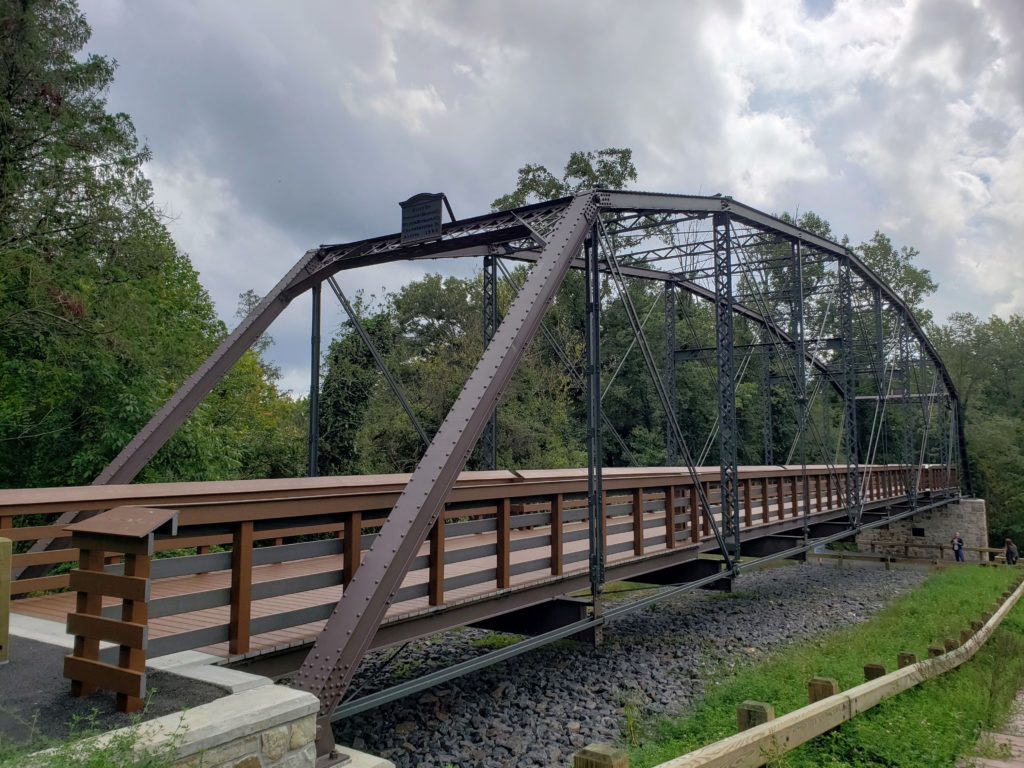
In September 2021, PA SHPO and PennDOT staff met nearby for their annual group meeting and made a site visit to the relocated bridge. Jeremy Ammerman, the Architectural Historian Cultural Resource Professional (CRP) for PennDOT District 8, presented the project’s background and the rehabilitation process.
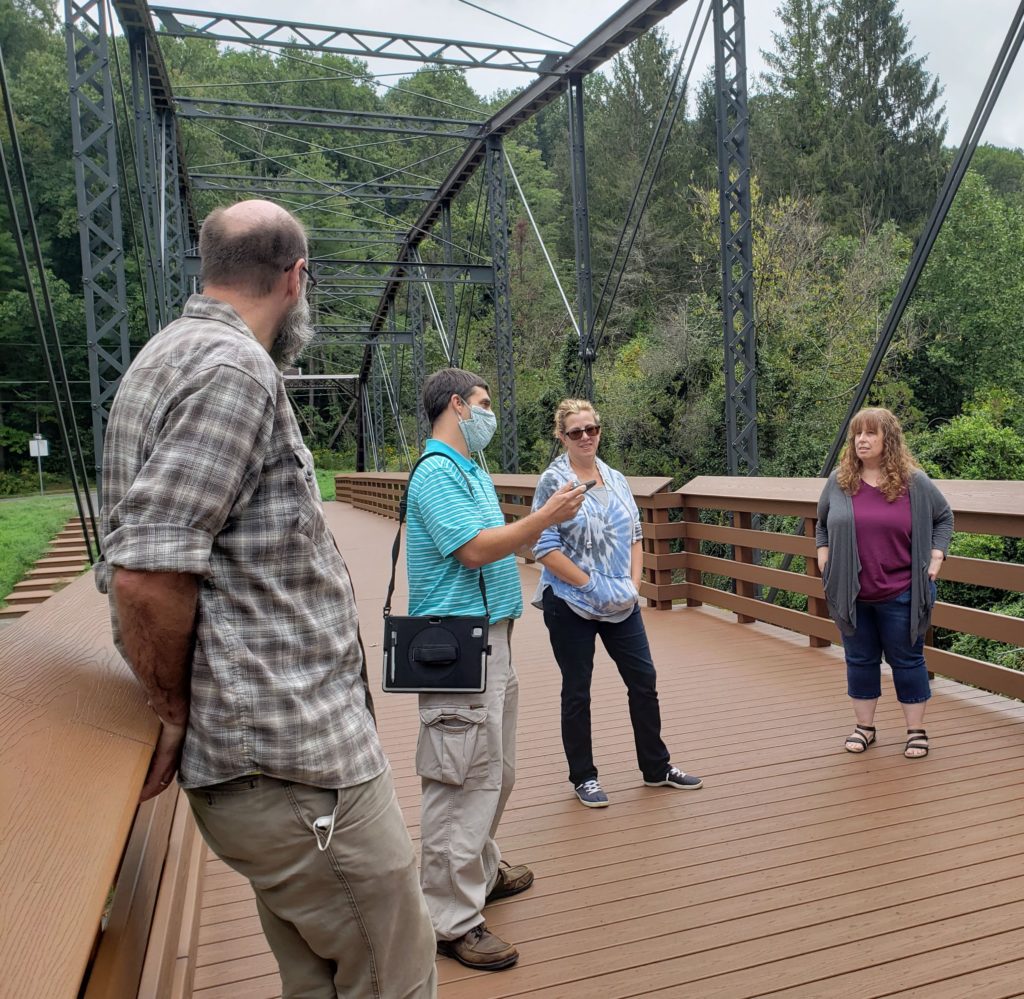
In July 2019, the Inwood Iron Bridge was lifted off its original abutments using a crane, then dissembled. Individual bridge members were repaired or replaced at another location. After the rehabilitation was complete, the bridge was reassembled at the new location.
Located close to the Swatara Rail Trail and Appalachian Trail, the new location of the Inwood Iron Bridge is less than a mile downstream from the original crossing. The land was donated by Charles and Charlotte Allwein for the project. Unlike its previous location across the Swatara Creek, the Inwood Iron Bridge now sits on land, allowing visitors to view notable details of the underside of the structure.
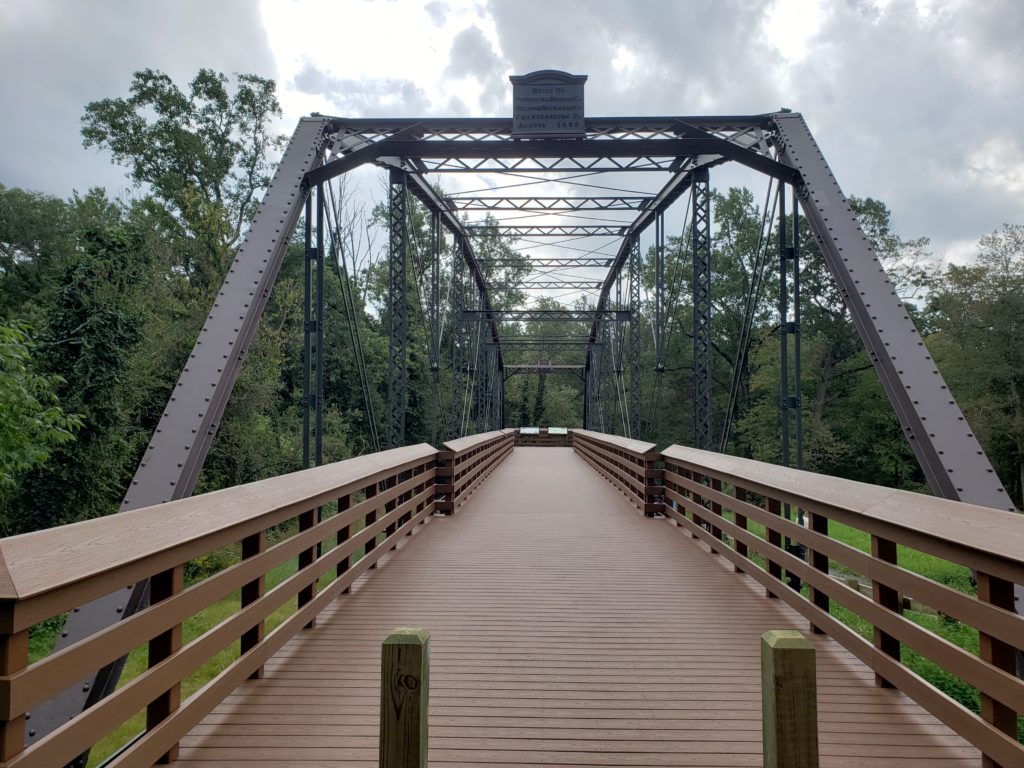
From the parking lot, visitors can follow a paved path to the bridge’s portal, or entrance. At the top of the portal is an ornamental bridge plaque which reads “Built by Pittsburgh Bridge Co Nelson & Buchannan Co Chambersburg PA Agents 1899.” The bridge sports a fresh paint job, with different colors for those members in compression and tension.
Visitors can walk through the trusses and get an up-close look at the rehabilitated members that create the iconic Pennsylvania truss shape. At the end of the walkway, visitors will find interpretive displays on the history of water, rail, road, highway, and pedestrian transportation in the area. Additional displays explain the history of the Pennsylvania (Petit) thru Truss and provide more information on the Z-hanger pin connection detail.
An additional path guides visitors underneath the bridge, providing a clear view of the distinctive Z-plate floorbeam hangers and pin connections. Some of the stone from the original bridge abutments was reused at the new site. A commemorative plaque featuring the names of people involved in the relocation project is located at the end of the bridge.
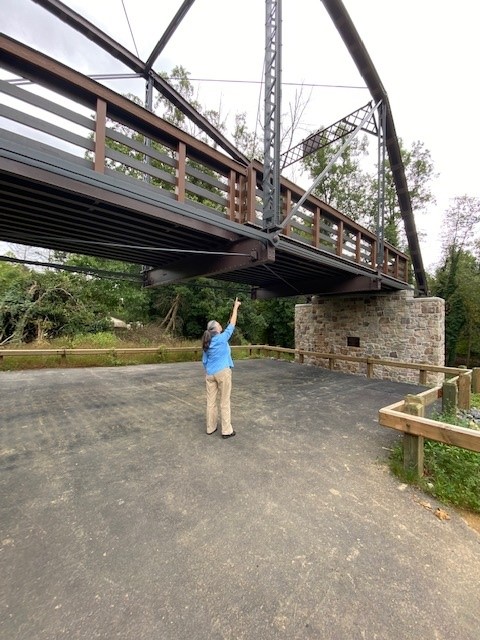
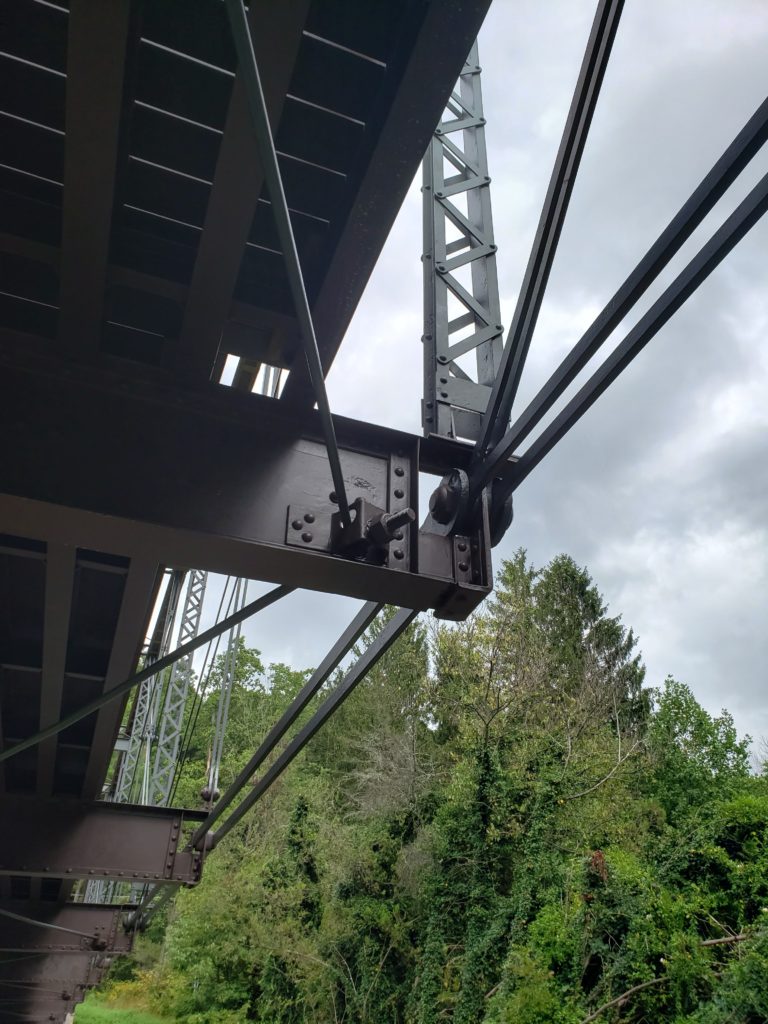
When traveling through Lebanon County, whether it’s by car on State Route 72 or by foot or bike along the Appalachian Trail or Swatara Rail Trail, it’s worth a stop to see the rehabilitated Inwood Iron Bridge at its new location and to learn more about its design and area transportation history.
Today’s post is by guest author Veronica Martin. Veronica is the Historic Bridge Program Manager for the Pennsylvania Department of Transportation. She manages several programs including historic bridge marketing and Historic Metal Truss Bridge Capital Rehabilitation Program.
Comment Policy
PHMC welcomes and encourages topic-related comments on this blog. PHMC reserves the right to remove comments that in PHMC’s discretion do not follow participation guidelines.
Commenters and Comments shall be related to the blog post topic and respectful of others who use this site.
Commenters and Comments shall not: use language that is offensive, inflammatory or provocative (this includes, but is not limited to, using profanity, obscene, or vulgar comments); disparage other commenters or people; condone illegal activity; identify the location of known or suspected archeological sites; post personal information in comments such as addresses, phone numbers, e-mail addresses or other contact details, which may relate to you or other individuals; impersonate or falsely claim to represent a person or an organization; make any commercial endorsement or promotion of any product, service or publication.
If you would like to comment on other topics not related to this blog post but related to PHMC, please fill out the PHMC Contact Us Form.
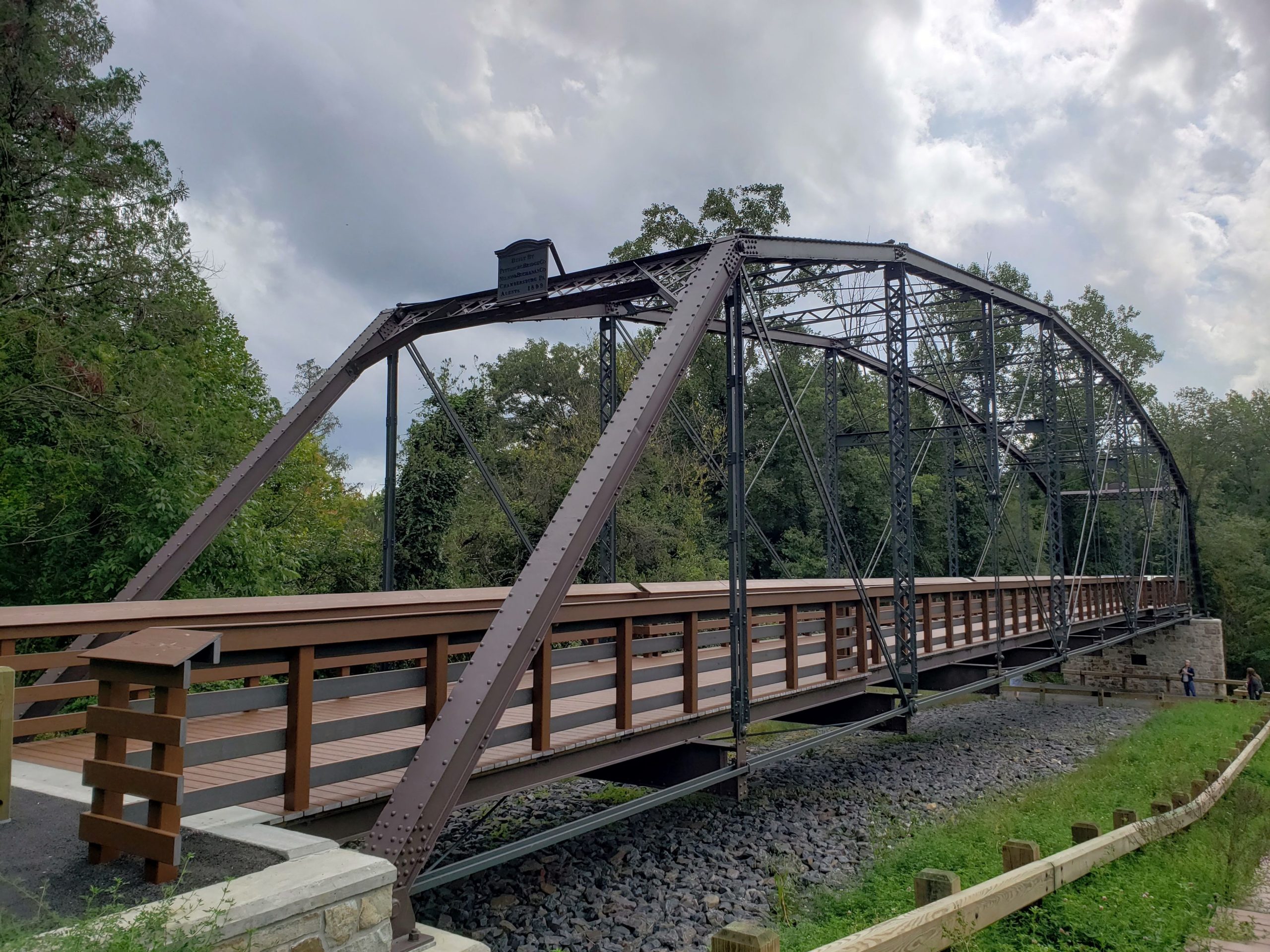
What a great success story of the preservation of this bridge technology! The photos of the bridge’s intricate structural design make the case for why such truss bridges deserve preservation.